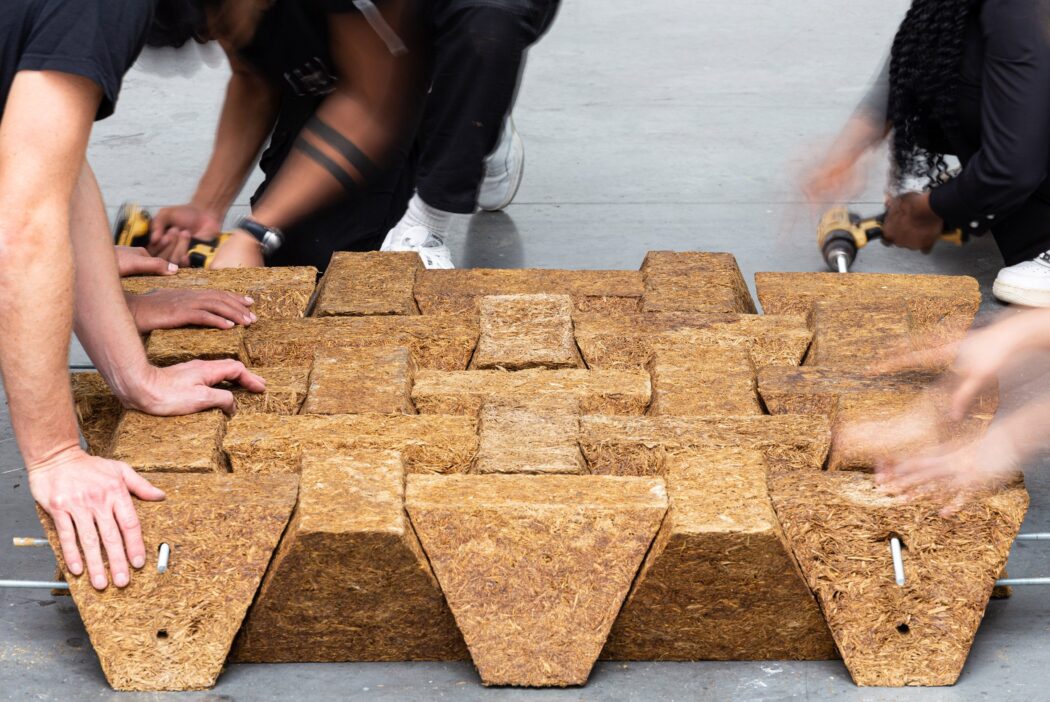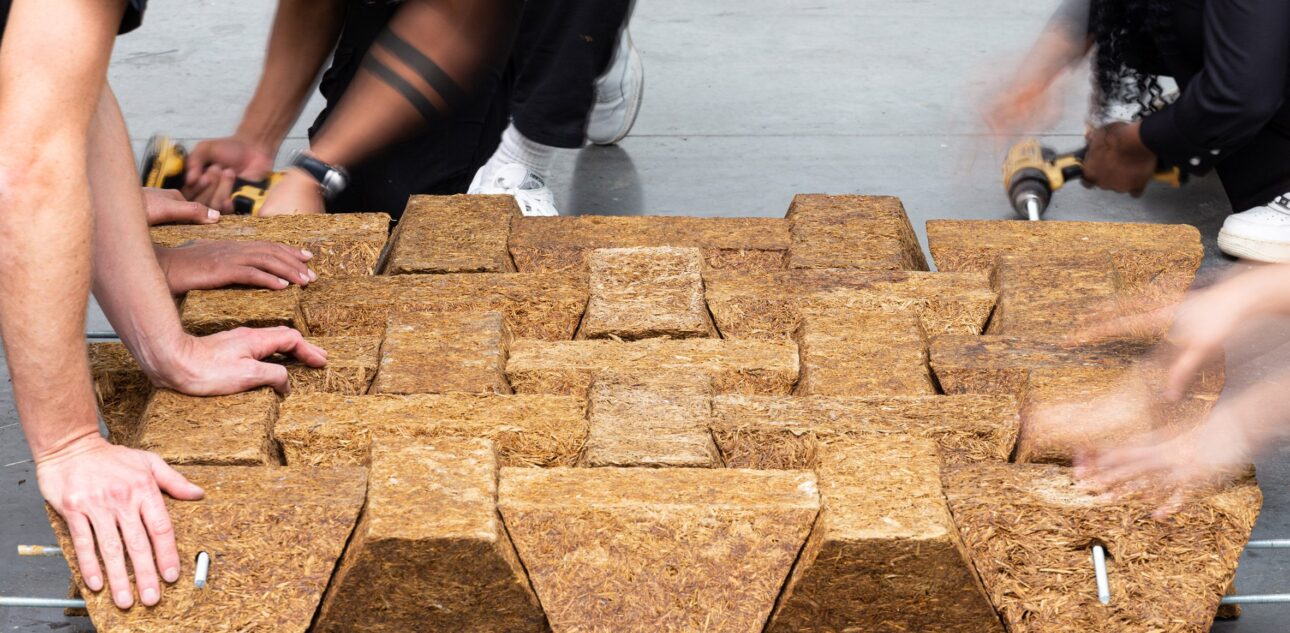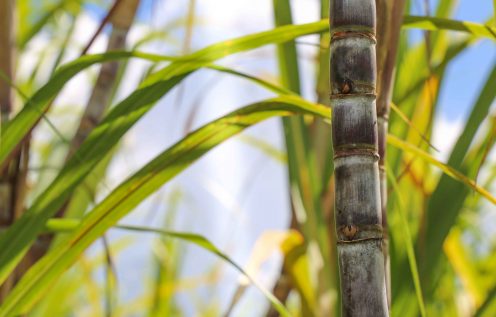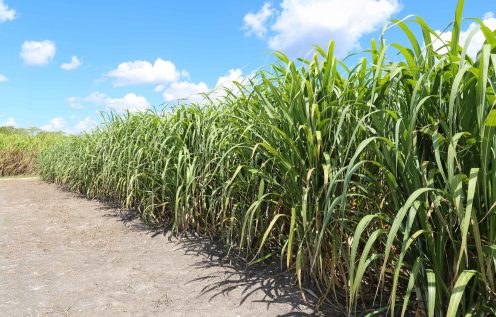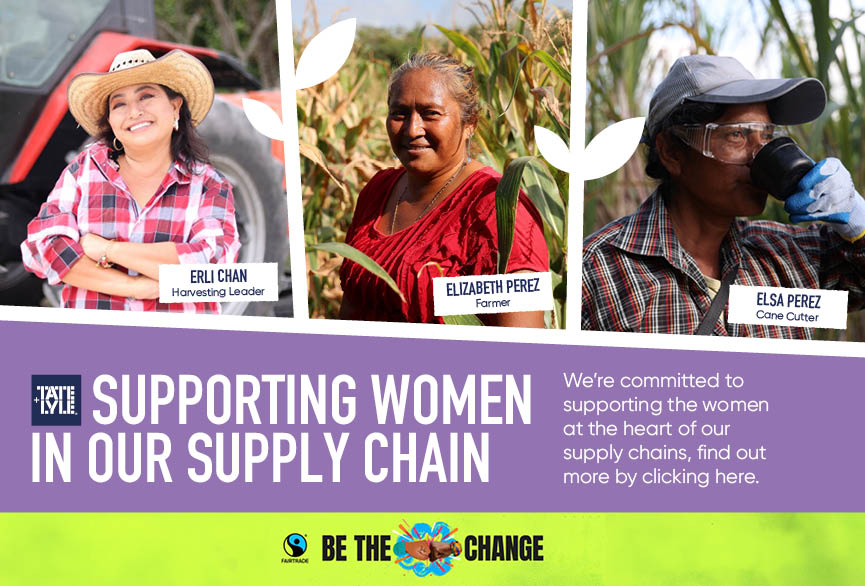25/04/2023 Case study
R&T team collaborates to produce a low-carbon alternative to concrete
Our Research & Technology team based at the Thames Refinery recently collaborated with the University of East London (UEL) and Grimshaw Architects on an exciting project to produce a sustainable construction material using sugarcane fibre (bagasse). The prototype floor-slab, called Sugarcrete™, has the potential to provide a low-carbon alternative to concrete, thanks in large part to the properties of sugarcane that make it one of the world’s most efficient and sustainable crops.
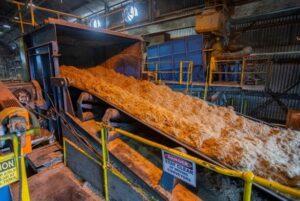
Bagasse is a by-product of the sugarcane milling process. It is the leftover fibre of the sugarcane stalk after it has been cut and squeezed of its sweet juice. Bagasse is mostly used as a bio-fuel source to power sugarcane mills, but has also been used to make sustainable tableware. Using it to create a low-carbon construction material is a novel and interesting idea given that building operations and construction account for almost 40% of the world’s energy-related CO2 emissions (source: Global Alliance for Buildings and Construction)
Creating SugarcreteTM
To create SugarcreteTM, bagasse is mixed with mineral binders and formed into interlocking blocks. The blocks are designed to be four times lighter and have 15 to 20 per cent of the carbon footprint of traditional bricks. It is also cheaper than concrete and its carbon emissions are 20 times lower, according to the team of researchers.
Watch this video by Jude Adoasi to learn more about how Grimshaw Architects and UEL have developed Sugarcrete.TM
Working with UEL, our neighbour in Newham
UEL and its students have built on material, learnings and ideas shared by Tate & Lyle Sugars through hours of study, research and testing to produce the viable prototype.
“We have collaborated with UEL for many years on a range of projects, but one of the most exciting examples is The SugarcreteTM project. It is so useful to be able engage in this type of collaborative project in that search for value. I am excited for further trialing and research.” John Kerr, Vice President, Research & Technology.
“In the R&T team, we are always looking to gain value from every molecule, and this is never more interesting than with an agricultural byproduct like bagasse.”
Our collaboration on Sugarcrete™ is not the first time our R&T team has helped innovate a sustainable construction material. In recent years, the team partnered with expert brick makers to find a unique and sustainable reuse for calcium carbonate cake from the Thames Refinery, turning a by-product from the sugar refining process into a valuable raw material that serves as a sustainable and renewable alternative to fireclay.
